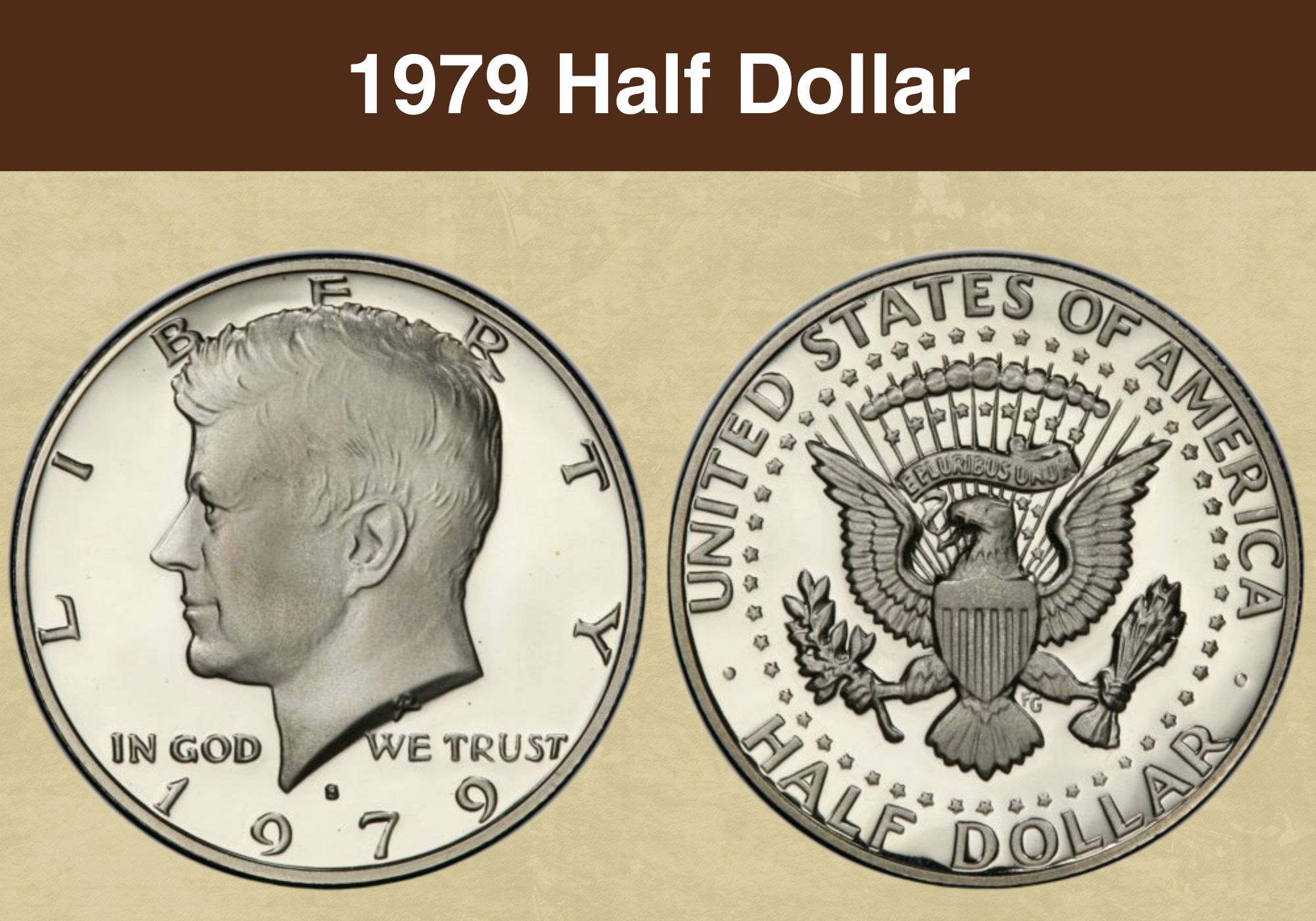
Coin Value Contents Table
- 1979 Half Dollar Value Chart
- History of the 1979 Half Dollar
- Features of the 1979 Half Dollar
- 1979 Half Dollar Grading
- 1979 Half Dollar Value Guides
- 1979 No Mint Mark Half Dollar Value
- 1979 D Half Dollar Value
- 1979 S Silver Half Dollar Value
- Rare 1979 Half Dollar Errors List
- Where to Sell Your 1979 Half Dollar ?
- FAQs
Have you found a half dollar dated 1979 in your pocket change? Or perhaps you’re thinking about adding one to your collection?
Either way, you’ll want to know what it’s worth. And you’ve come to the right place to find out!
We’re going to investigate the 1979 half dollar value. We’ll discover the differences that separate a coin worth its face value from one that’s worth hundreds of dollars. And we’ll find out more about this denomination’s history and design as we go.
So if you’re ready, step this way!
1979 Half Dollar Value Chart |
|||||
| Mintmark | PO1 | XF45 | MS60 | MS65 | MS67 |
| 1979 (P) No Mint Mark Half Dollar Value | $50 | $1 | $5 | $20 | $450 |
| 1979 D Half Dollar Value | $50 | $1 | $5 | $17 | $700 |
| PR60 | PR62 | PR65 | PR67 | PR70 | |
| 1979 S Proof Deep Cameo Half Dollar, Type 1 Value | $1 | $5 | $5 | $8 | $10 |
| 1979 S Proof Deep Cameo Half Dollar, Type 2 Value | $11 | $11 | $11 | $14 | $16 |
History of the 1979 Half Dollar
The first half dollars in US coinage were struck way back in 1795. But almost 200 years on, a new design was produced to honor the memory of President John F. Kennedy.
The first of those coins were struck in 1964, just two months after the President’s assassination. They bear his image on the obverse, and the series is commonly known as the Kennedy half dollar.
Congress moved quickly, authorizing the new coins a month after Kennedy’s death. Fortunately, Frank Gasparro and Gilroy Roberts, engravers at the Mint, had already prepared suitable designs for other purposes. As such, the new coins could be rolled into production in record time.
Kennedy’s widow, Jacqueline was given the choice of three denominations for the coin: the quarter, half dollar and dollar. She chose the half dollar, saying she did not believe her late husband would have wanted to displace the image of the first president, George Washington.
The first of the coins were struck in silver. The national response to the tragic event, however, meant that most were removed from circulation as soon as they were issued. (The rising price of silver also probably contributed to the hoarding.)
The following year, the silver content of the coins was reduced from 90 to 40 per cent. Other denominations that had previously been struck in silver, the dime and quarter, had their silver removed altogether.
And in 1970, the continued increase in the silver price meant that the half dollar went the same way. The 1979 mintage might look like silver, but the core is actually copper. The silver color comes from a cupronickel cladding.
But a six-year habit of seeing half dollars as items to be hoarded rather than spent didn’t die easily. The new composition increased their circulation slightly, but few coins were used on a day-to-day basis.
Half dollars stacked up in the Mint’s reserves. And while the denomination continues to be produced in small quantities today, new half dollars are aimed at the collecting market.
Also read: 13 Most Valuable Franklin Half Dollars Worth Money
Features of the 1979 Half Dollar
The Obverse of the 1979 Half Dollar
The portrait of John F. Kennedy on the obverse of the 1979 half dollar was the work of Mint engraver Gilroy Roberts. Roberts had originally created the image for a presidential medal, and it had been approved by Kennedy himself.
In the medal image, Kennedy had worn a neutral expression. For the coin, he was depicted with a slight smile.
The President’s widow, Jacqueline, and his brother, Robert, were invited to the Mint to view trial strikes. The former apparently suggested a small change to the depiction of her late husband’s hair.
The word “LIBERTY” is inscribed above the President’s portrait, following the curve of the upper coin edge. At the bottom, inscribed discreetly on the cut-off, are Roberts’ initials. The date curves parallel to the lower coin edge.
The final element of the design is the familiar motto “IN GOD WE TRUST”. This is inscribed on the horizontal, just above the date, with two words appearing on either side of Kennedy’s neck.
If the half dollar was struck in Denver or San Francisco, it will have a mint mark on the obverse too. Look for a “D” or “S” just above the date.
The Reverse of the 1979 Half Dollar
The reverse design was the work of Frank Gasparro. Gasparro was then assistant to Gilroy Roberts, but later succeeded him as Chief Engraver at the Mint.
Just as with the obverse, the need for the coin to be prepared quickly meant that a pre-existing design was used. And again, it was the design originally prepared for the Kennedy presidential medal that was pressed into service.
The image brings together the Presidential seal, a shield, and an eagle. An olive branch and bundle of arrows are clasped in the eagle’s talons. The design is surrounded by stars, representing the states.
Gasparro’s initials appear below the eagle’s left leg (its right as the coin is viewed).
The Latin motto “E PLURIBUS UNUM”, meaning “From the many, one”, is inscribed above the eagle. The country name is at the top of the coin, while the denomination – written in full as “HALF DOLLAR” – is at the bottom.
Other Features of the 1979 Half Dollar
1979 saw the Mint facilities at Philadelphia and Denver striking half dollars for circulation. The San Francisco facility, meanwhile, produced smaller numbers of proof coins, aiming them at the collectors’ market.
Both proofs and business strike half dollars have reeded edges. They measure 30.61 millimeters in diameter and weigh 11.3 grams.
They have a copper core and are clad in cupronickel, and weigh slightly less than silver Kennedy half dollars as a result. The difference between the clad half dollars and the earliest 90 per cent silver coins is 1.2 grams. The difference between them and the 40 per cent silver coins is just 0.2 grams.
This YouTube video from DC Coin World provides more information on Kennedy half dollars through the years.
Also read: 13 Most Valuable Kennedy Half Dollar Worth Money
1979 Half Dollar Grading
1979 Half Dollar Value Guides
1979 No Mint Mark Half Dollar Value
The half dollars struck at the Philadelphia facility don’t have a mint mark. So if there’s no small letter above the date, yours is a Philly example.
Over 68 million half dollars were struck there, accounting for the vast majority of the total. Over 13 million are believed to survive, and examples at most grades are easy to find. Indeed, it’s quite possible to find a circulated coin amongst your pocket change.
In circulated grades, however, values are modest. Most coins will be worth a dollar or two. But there’s a premium for coins graded 1 and 2. The PCGS values the former at $50, and the latter at $10.
It’s possible to get your hands on a mint state example without spending much money. At MS60, the value is just $5, and even a gem MS65 is worth only around $20.
The very finest examples, however, are a different story. Coins graded MS67 are valued at $450 apiece. Half a grade higher, that value increases to $675. And the only coin to have been certified at MS68 by the PCGS to date is valued at $4,100.
1979 D Half Dollar Value
Far fewer half dollars were struck at Denver than Philadelphia in 1979. The facility there produced a little under 16 million coins. But with over 3 million survivors at all grades, they’re not rare today.
This is another case where coins graded 1 or 2 command a premium. They’re valued at $50 and $10 respectively. At other circulated grades, the D mint mark makes little difference to value. Most coins are worth between $1 and $5.
In mint state, values start at $5, the same as the Philadelphia equivalent. A gem MS65 1979 D half dollar is worth around $17.
There’s a big jump in values between MS66+ ($75) and MS67 ($700). And quality tops out at MS67+, with a 1979 Denver half dollar at that level worth $3,500.
1979 S Silver Half Dollar Value
The silver dollars struck in San Francisco in 1979 were all proofs. These are specially struck using precisely detailed dies and highly polished planchets. They were aimed at collectors, and meant to be displayed rather than used.
All 1979 proof half dollars are also what are known as “deep cameos”. These are proof coins with a dramatic contrast between frosted devices and reflective fields (the flat parts of the coin). Proofs with less of a contrast are known as cameos, whilst those without are simply proofs.
But not all 1979 proof half dollars are the same. Almost 3.7 proofs were struck, and they’re divided into two distinct types, based on the appearance of the mint mark.
Type 1 coins are known as the “filled S”. On these, the mint mark looks like a blob. With the Type 2, the S is curved and clear.
Because proof coins were always treated as collectors’ items, they were stored carefully and remain easy to get hold of. That keeps values modest. But Type 2 proofs are more valuable than Type 1.
As proof coins are, by definition, uncirculated, the lowest available grade is PR60. A Type 1 half dollar at that grade is worth just a dollar. But with the clear S, that value increases to $5.
Prices for both types stay in the low double figures all the way up to PR69. But there’s a significant difference for half dollars with the perfect PR70 deep cameo grading. A Type 1 example is valued by the PCGS at $50. But if it’s Type 2, it’s worth $150.
Also read: 11 Most Valuable Half Dollars In Circulation
Rare 1979 Half Dollar Errors List
1979 Half Dollar, Double Struck, Double Brockage/Counterbrockage
Two 1979 half dollars struck in Philadelphia have matching errors. They occurred when one coin was struck twice. On the second strike, it stuck to the die. That coin then struck the next planchet, leaving a blurred impression of the double struck coin.
The two coins were incredibly unusual. They were both in mint state, graded MS64 by the PCGS. And they were presented at auction as a “mated pair”, selling for over $4,000.
1979 (P) Proof Half Dollar, Struck Off-Center
Occasionally, a planchet is not properly aligned when it’s struck by the die. As a result, the image on one side of the coin is off-center.
That’s what happened with one Philadelphia half dollar in 1979. The error wasn’t particularly dramatic – the strike was around 10 per cent off where it should have been. But the coin was in mint state, graded MS61 by the NGC.
It sold at auction for $560.
1979 Half Dollar Struck on Susan B. Anthony Dollar Planchet
One of the more unusual types of errors are coins struck on the wrong planchet. In 1979, one Kennedy half dollar was struck on a planchet that should have been used for a Susan B. Anthony dollar.
As the planchet was smaller than it should have been, the edges of the design are lost.
The resulting coin was in great condition, graded a gem quality MS65 by the PCGS. And when it was presented at auction, it sold for over $900.
This YouTube video from Couch Collectibles shows all these errors and more in detail.
Where to Sell Your 1979 Half Dollar ?
Now that you know the value of your coins, do you know where to sell those coins online easily? Don’t worry, I’ve compiled a list of these sites, including their introduction, pros, and cons.
Check out now: Best Places To Sell Coins Online (Pros & Cons)
FAQs
How rare is a 1979 half dollar coin?
In circulated condition, it isn’t too difficult to find 1979 half dollar coins. And those from Philadelphia (no mint mark) and Denver (marked with a “D”) can sometimes be found in pocket change.
In high uncirculated grades, however, Denver and Philadelphia coins are both rare. Anything graded MS66+ and above will be worth good money.
San Francisco proofs, however, are relatively easy to find at all grades – even a perfect PR70. The rarer of the two types is the Type 2. This has a clearly inscribed “S” mint mark, as opposed to the blocky Type 1.
Is a 1979 half dollar real silver?
Although the 1979 half dollar appears silver, the color actually comes from cupronickel cladding. With the exception of the bicentennial half dollars, none of the regular Kennedy half dollars were made with real silver after 1970.
Some of the Kennedy proof dollars made from 1992 onwards, however, do contain silver. And since 2019, proof Kennedy dollars made from 99.9 per cent silver have been struck for collectors.

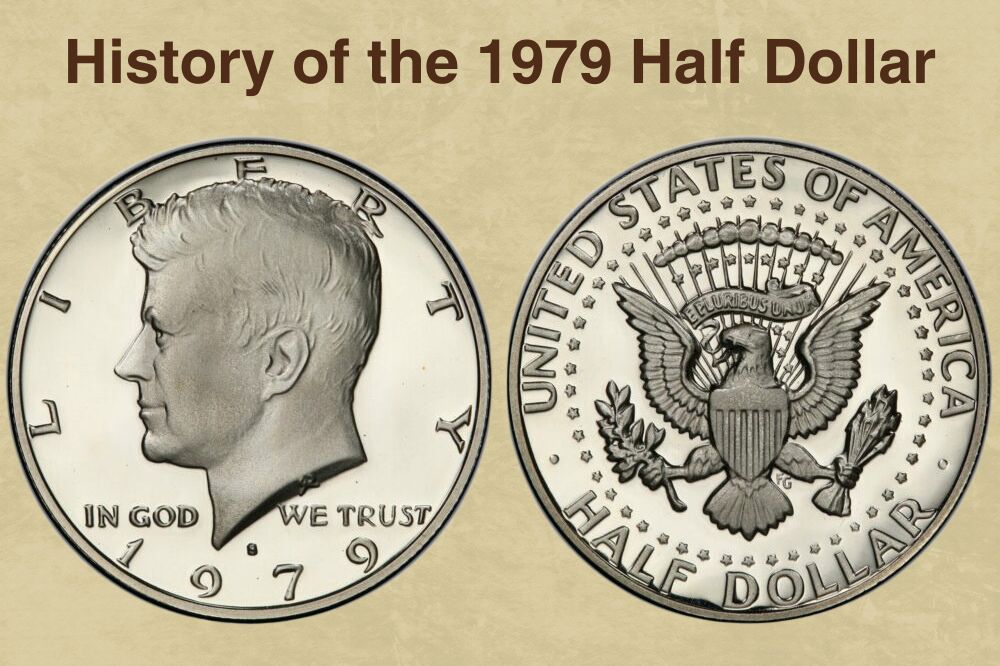
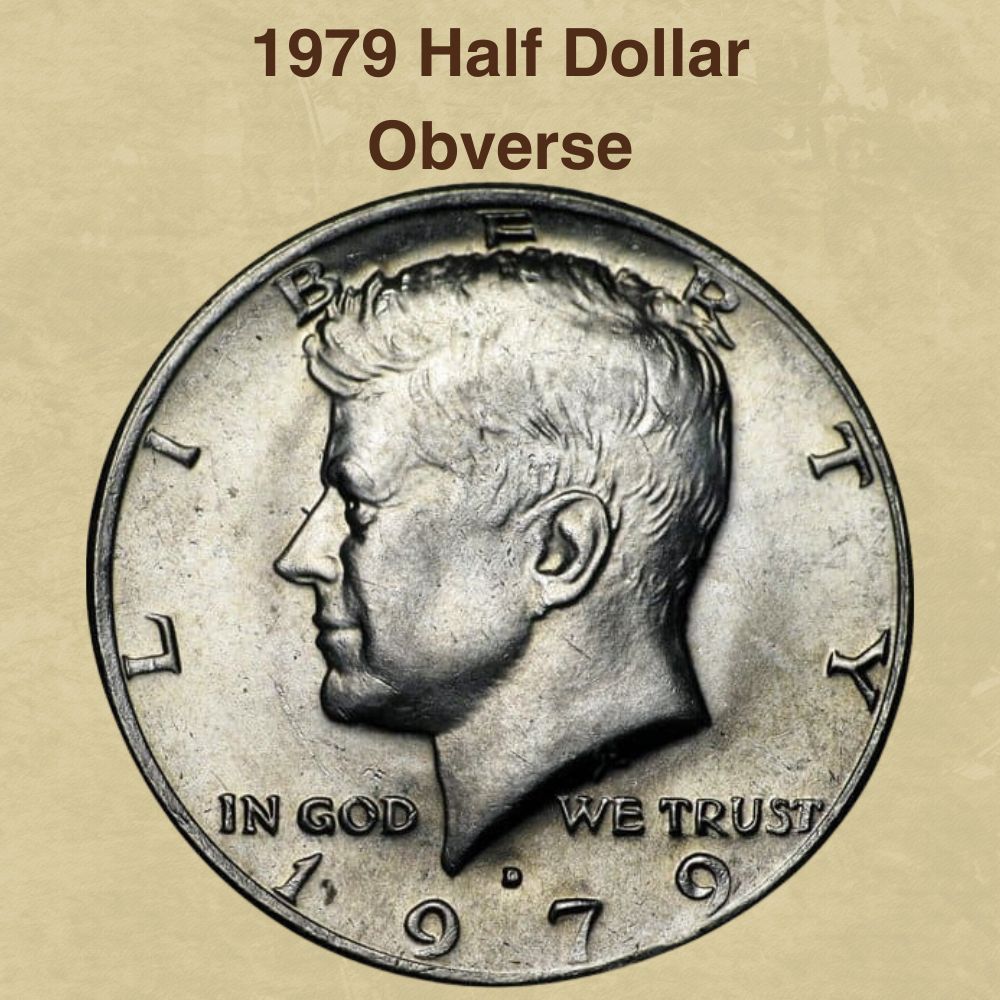
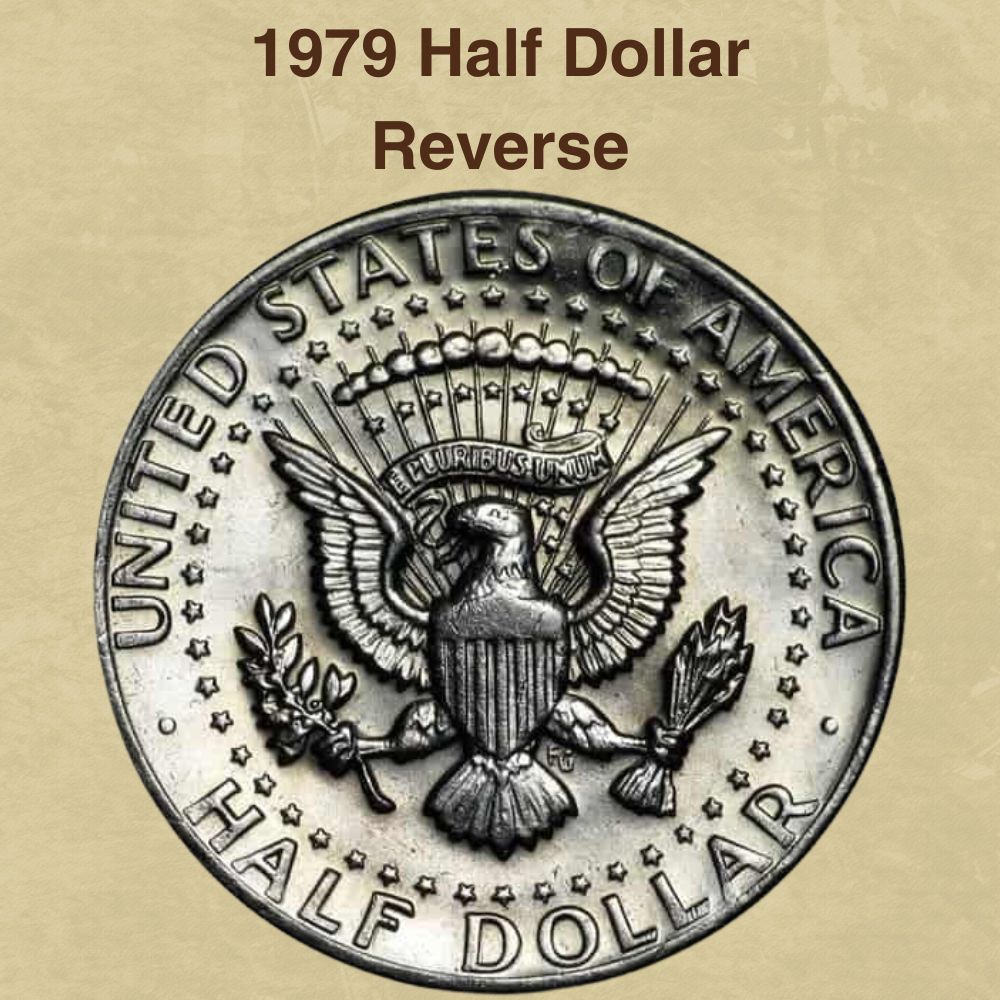
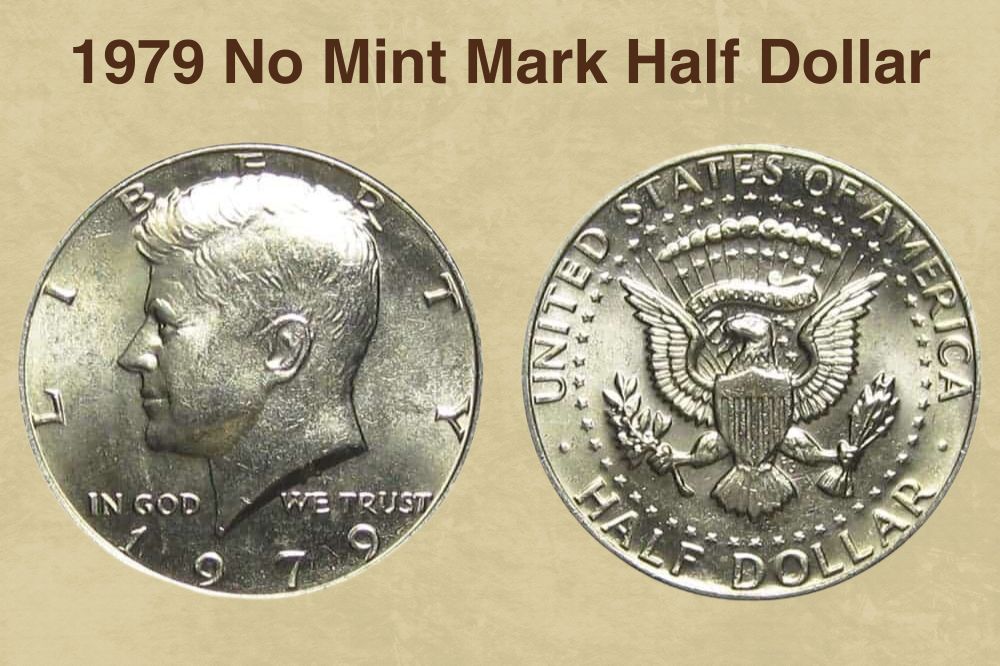
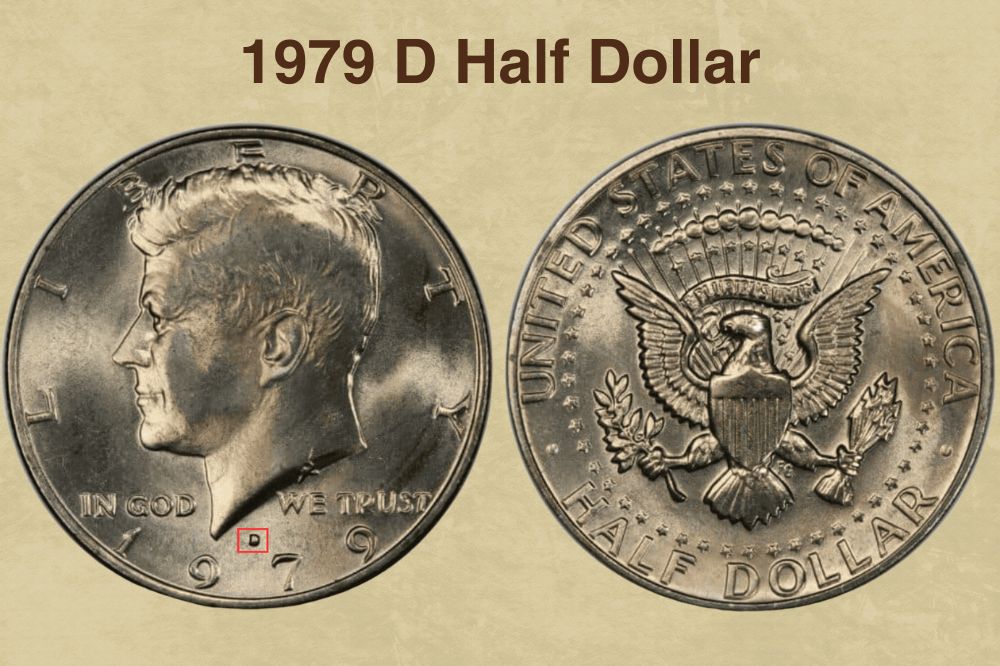
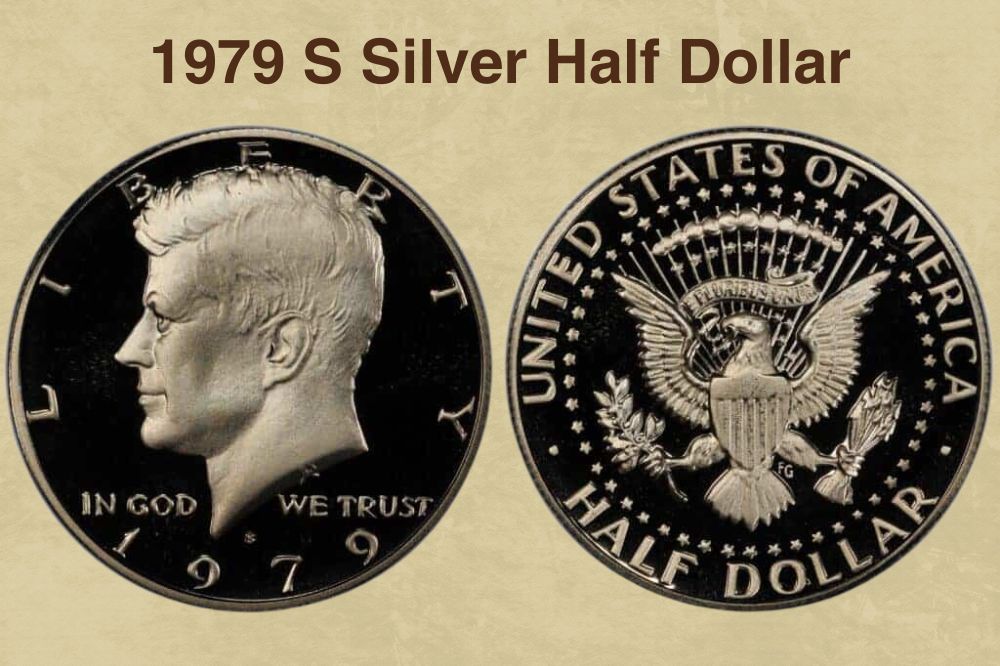
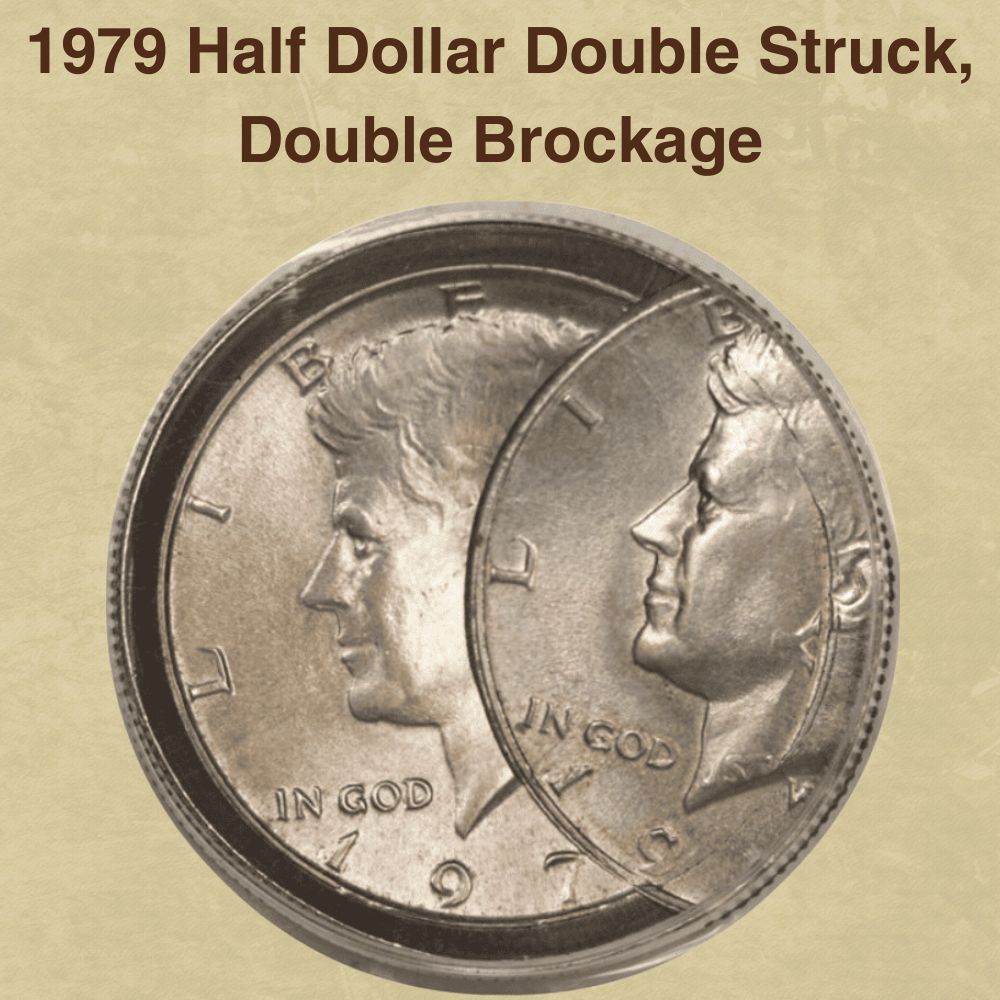
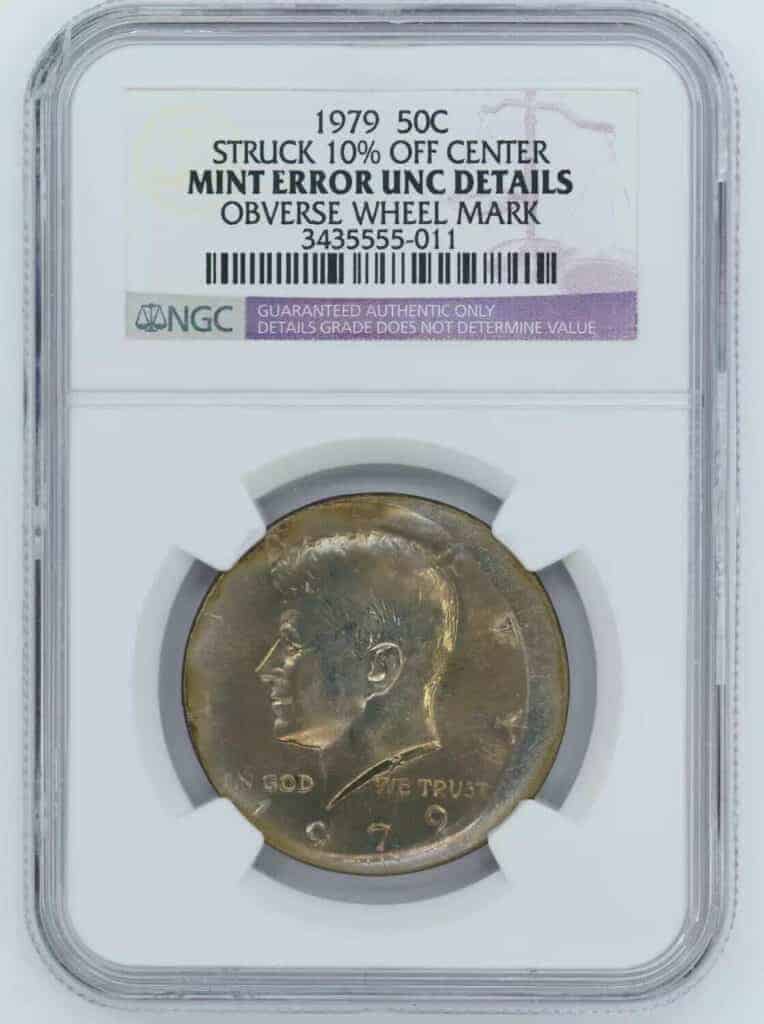
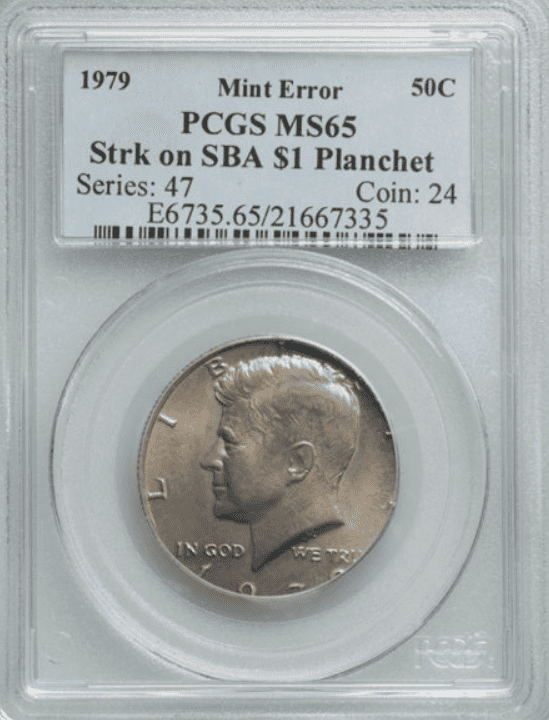
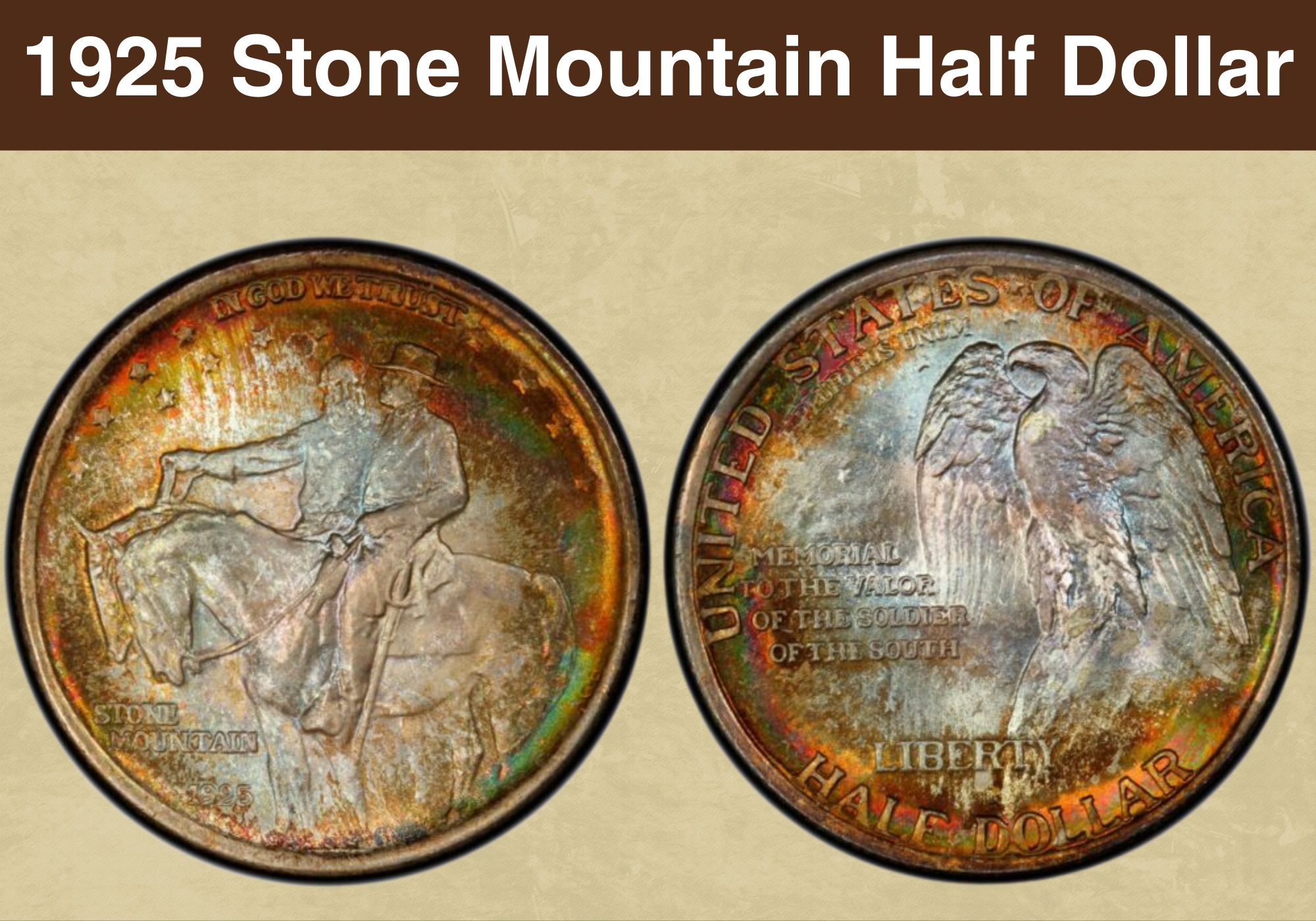
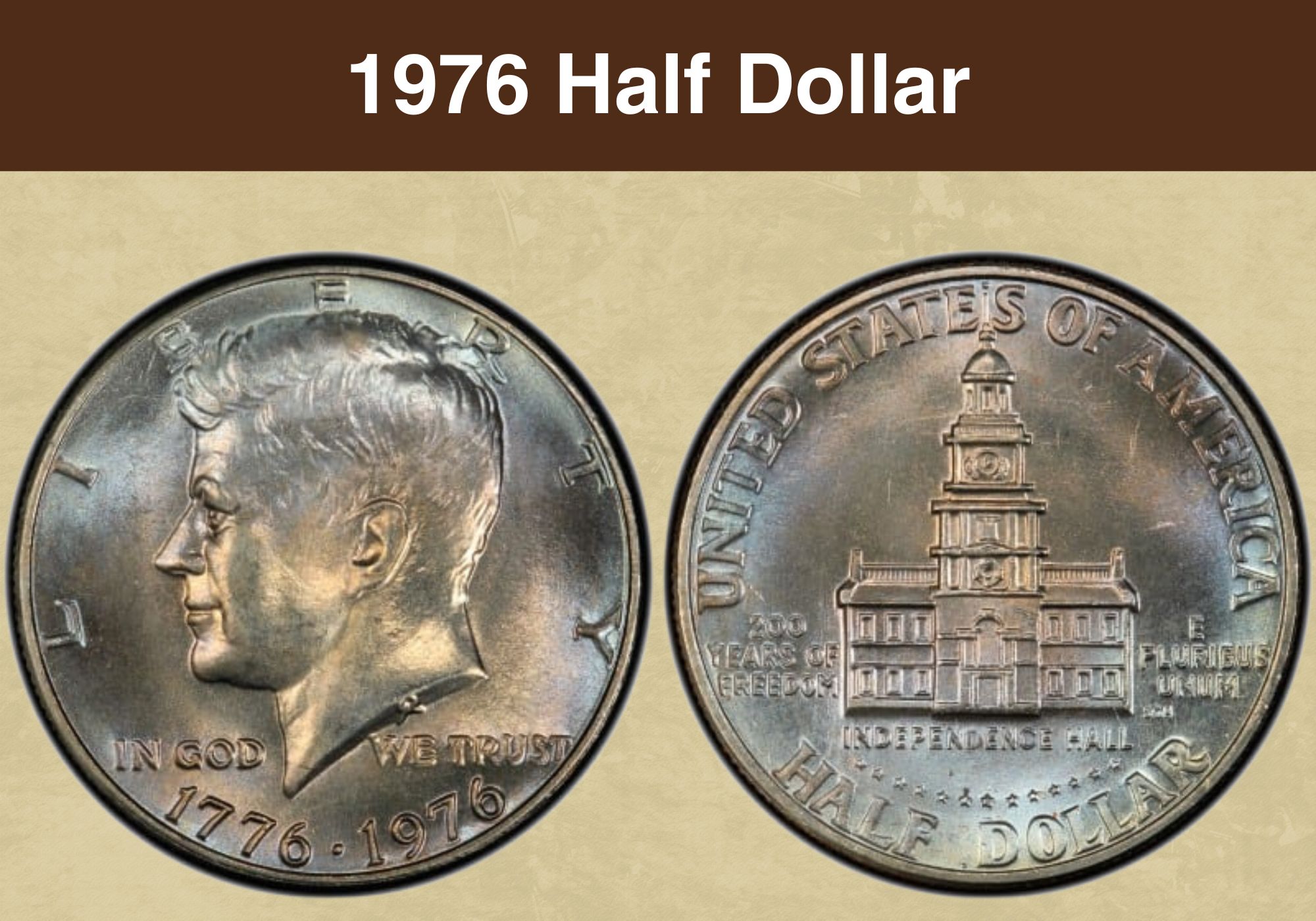
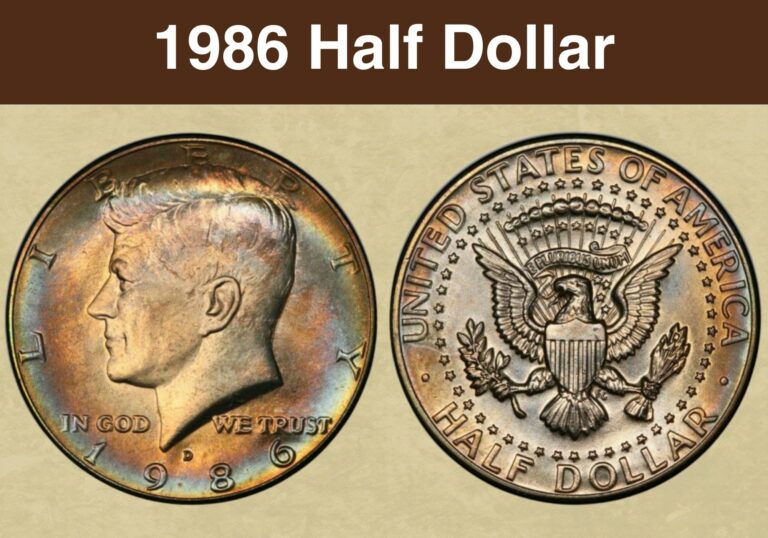
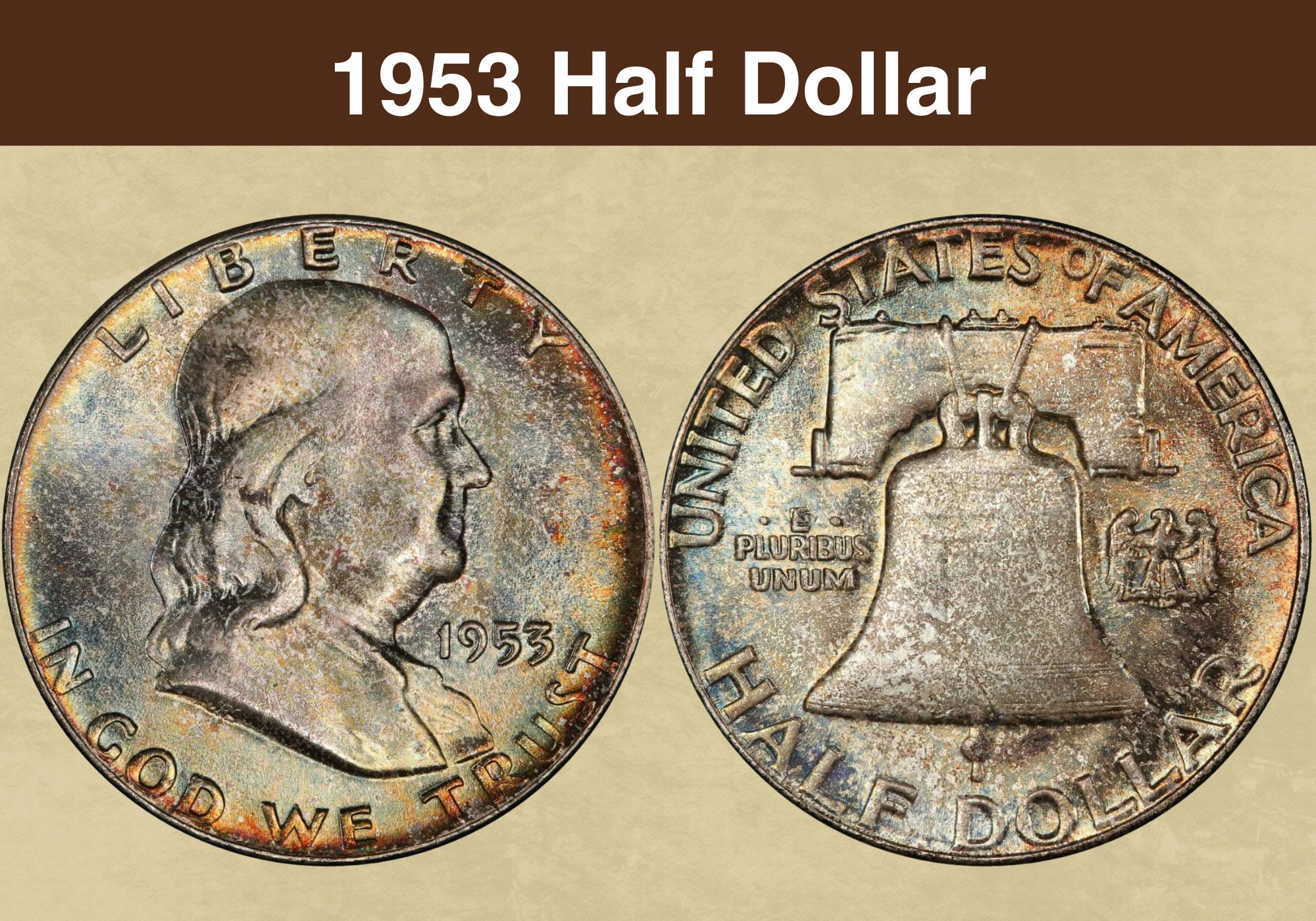
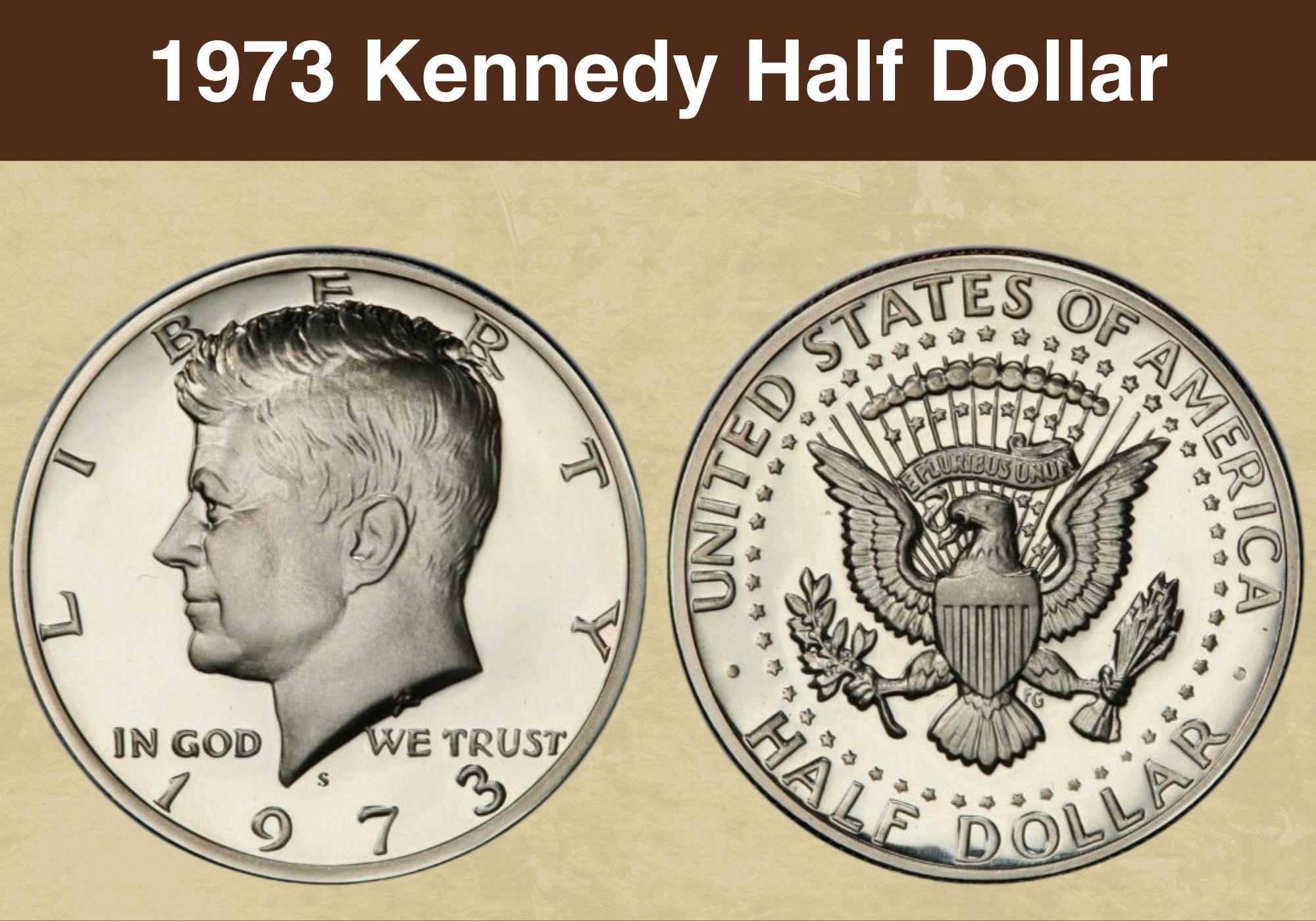
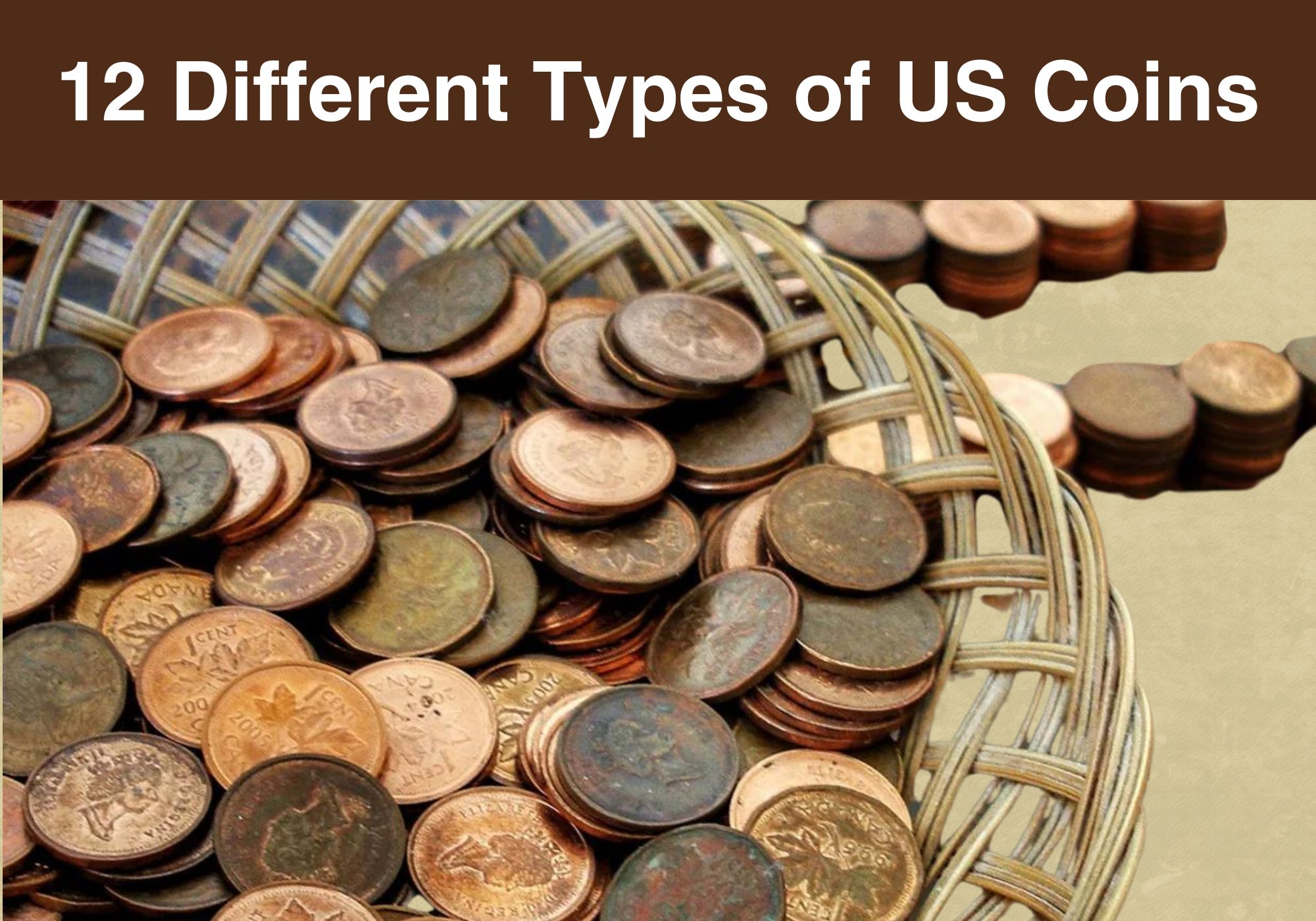
I have a 1979 d Kennedy half dollar that I believe may be a transitional error. It weighs 11.59 grams. Anyone aware of, or have any ideas about what my next steps should be?